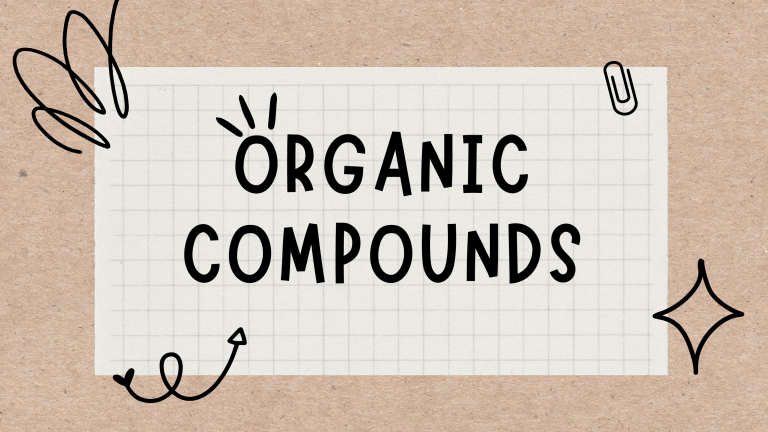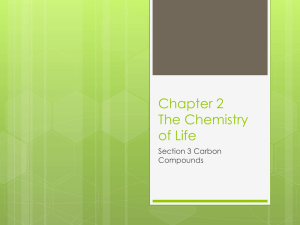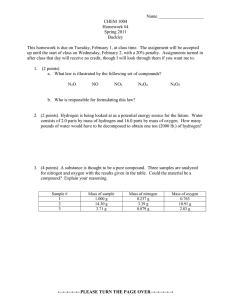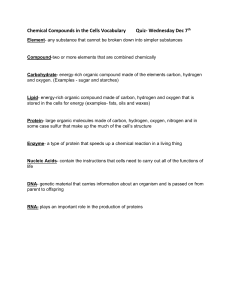
• In Chemistry, the term ORGANIC describes chemical compounds that contain CARBON and other elements such as hydrogen, oxygen, nitrogen, sulfur, or phosphorus. • Compounds can be classified into two main groups: Organic and Inorganic. • Organic Compounds contain carbon that usually bonded to hydrogen, oxygen, nitrogen, sulfur, or phosphorus. • Inorganic Compounds do not contain carbon atom. Soap Glucose Alcohol Salt Water Carbon Dioxide • Organic- living organisms • This molecules form the basis for life. • They are studied in the fields of Chemistry and Biochemistry. • He coined the term organic compound in the year 1807 • Carbon, Hydrogen, and Oxygen(CHO) are the major elements of carbohydrates. • It is the main source of energy. • It can make up cell structures. • It is used as a stored energy in plants. • Monosaccharide (glucose and fructose) • Disaccharide (maltose and sucrose) • Polysaccharide (starch, glycogen, cellulose) • Carbon, Hydrogen, and Oxygen(CHO) are the major elements of Lipids. • The uses of lipids includes the following: storing energy, components cell membranes, signaling, waterproof covering. • Triglycerides (fats, oil, and waxes) • Steroids • Phospholipids • Carbon, Hydrogen, Oxygen, and Nitrogen(CHON) are the major elements of Proteins. • Proteins are used for cellular structures, controls substances in and out of the cell, and fights diseases. • • • • • • Hemoglobin Collagen Insulin Keratin Myoglobin Fibrin • Carbon, Hydrogen, Oxygen, Nitrogen, and Phosphorus(CHONP) are the major elements of Nucleic Acid. • Nucleic acids are the molecules in our cells that direct and store information for reproduction and cellular growth. • RNA (Ribonucleic Acid) • DNA (Deoxyribonucleic Acid)


